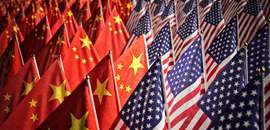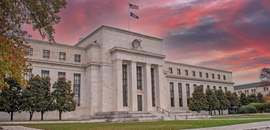Dollar Perseveres Despite Challenges
In the meantime, China’s government has sought to bolster the status of its currency, the yuan, in international markets. However, like Japan, it is reluctant to allow capital to flow freely, and its financial markets are much less developed than the U.S. Consequently, China has made only limited progress in displacing the dollar. Based on data from SWIFT (Society for Worldwide Interbank Financial Telecommunications), nearly 85 percent of international transactions are settled in dollars versus only 2 percent for the yuan until recently.
Is "De-dollarization" on the Horizon?
Despite this, there is still considerable talk that the dollar’s role is likely to decline, which is being called “de-dollarization.” The main reason is geopolitical. The argument is that as the U.S. government sanctions countries with which it has conflicts, it lessens the appeal of the U.S. as a safe haven.
The most recent example is the sanctions on Russia in the wake of its invasion of Ukraine. During a visit by Xi Jinping to Moscow last month, Vladimir Putin pledged to use China’s currency for “payments between Russia and countries of Asia, Africa, and Latin America” in an attempt to displace the dollar. According to press reports, Russia is now using the yuan more than the dollar in transactions, and its share of international transactions has doubled to 4 percent.
Beyond this, there is talk that other countries may follow suit. China has pursued agreements with Russia, Iran, and countries in Asia to use its currency for cross-border transactions. Last week, Brazilian President Lula da Silva met with Xi Jinping to deepen trade ties with China. In a speech at the New Development Bank in Shanghai, Lula called on developing countries to work towards replacing the dollar with their own currencies in international trade.
This message has been echoed by Jim O’Neill, the former Goldman Sachs economist who launched the “BRICs” acronym (short for Brazil, Russia, India, and China). However, in a commentary for Project Syndicate, he acknowledged “until would-be challengers can find a credible alternative to the dollar for their own savings, the greenback’s dominance will not really be in doubt.”
Amid all the angst, what is unusual is that it is happening after a period of exceptional dollar strength. The dollar surged by more than 15 percent on a trade-weighted basis from mid-2021 to the end of last year as the Fed raised interest rates aggressively. Although it has given back some gains this year in anticipation that the Fed is about to pause, it is still very strong. Moreover, even though some regional U.S. banks have experienced deposit flight, the Fed played a key role in supplying dollars to European central banks during Credit Suisse’s funding problems.
Why Worry About the Dollar's Status Now?
My own take is that the real threat today is not the dollar but fissures in the global trading system. The risk is that it could be splintering into two blocs—the alliance of OECD members and outliers such as Russia, North Korea, and Iran. The big unknown is how China will align itself. If it joins the outliers, it would mean a return to the world of the Cold War era, where the Soviet Union formed Comecon to trade with Eastern European satellites. As I have discussed in a previous commentary, this would represent a major setback for the post-war order that contributed to strong global growth.
A version of this article was posted to TheHill.com on April 21, 2023.
This publication has been distributed for informational purposes only and should not be considered as investment advice or a recommendation of any particular security, strategy, or investment product. Opinions expressed in this commentary reflect subjective judgments of the author based on the current market conditions at the time of writing and are subject to change without notice. Information and statistics contained herein have been obtained from sources believed to reliable but are not guaranteed to be accurate or complete. Past performance is not indicative of future results. No part of this publication may be reproduced in any form, or referred to in any other publication, without express written permission of Fort Washington Investment Advisors, Inc.

























